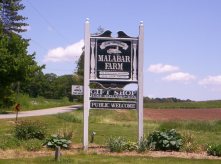(Posted by Melanie Houston, OEC Director of Water Policy & Environmental Health)
The United States Forest Service announced on Monday that shale drilling, or “fracking” will be allowed in the Wayne National Forest.
In a statement issued by the agency, Anne Carey, Wayne National Forest Supervisor, concluded that there was no need to amend the 2006 Forest Plan for the Wayne to incorporate potential surface level impacts associated with horizontal drilling. Carey stated “I have reviewed the new information contained in the Supplemental Information Report, and determined that further environmental analysis is not needed.” She further stated “I believe that the existing Forest Plan direction is adequate to address the surface effects anticipated from the potential development of horizontal wells as projected by the Bureau of Land Management (BLM).” According to an analysis done by the U.S. Bureau of Land Management, shale wells could be drilled in as many as 13 sites throughout the Wayne forest by 2016.
The Ohio Environmental Council (OEC), along with Buckeye Forest Council and other environmental organizations, oppose Forest Service’s decision to allow fracking in the Wayne, Ohio’s only national forest. “This decision is premature and inconsistent with the agency’s mission ‘to sustain the health, diversity, and productivity of the nation’s forests and grasslands to meet the needs of present and future generations’,” stated Melanie Houston Director of Water Policy and Environmental Health.
In a statement after the Wayne decision, Nathan Johnson, staff attorney for the Buckeye Forest Council, stated, “The Wayne’s decision is extremely disappointing.”
“We believe the Wayne is violating federal law by failing to update their 2006 study and plan, and litigation is a distinct possibility,” added Johnson.
According to Buckeye Forest Council’s analysis, Federal law requires the Forest Service to conduct a new environmental study and update their plan whenever ‘significant new circumstances or information’ arise. High volume horizontal fracking is clearly a significant new circumstance demanding study and additional protections.
Trent Dougherty, Director of Legal Affairs at OEC stated, “The Forest Service has failed to conduct their due diligence in reviewing the environmental impacts associated with unconventional gas drilling in national forestland. They have decided to take a short-cut rather than fully assess fracking’s impacts on the long-term viability of this treasure of Southern Ohio.”
Ohio’s lone National Forest is now fertile ground for industrial-scale fracking.
The Forest Service itself acknowledged in their supplemental informational report that there are drastic differences between conventional oil and gas drilling and the new horizontal drilling: larger well pads, more surface area disturbance, and much greater water usage.
“There will also be more air emissions, more noise, and more light pollution, which will be disturbing not only to the surrounding public and forest visitors, but also to the federally endangered Indiana bat and sensitive species little brown bat.” added Houston.
Read the US Forest Service’s report:
